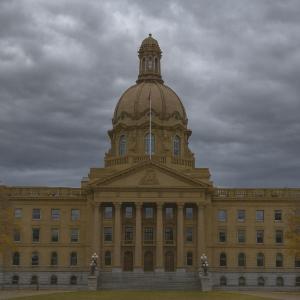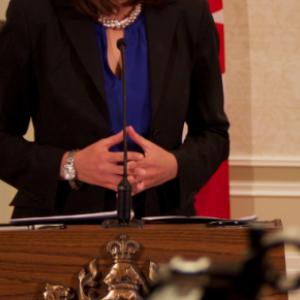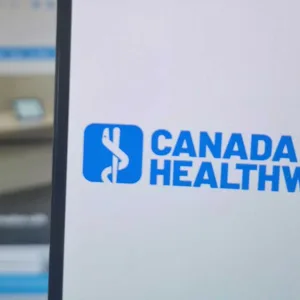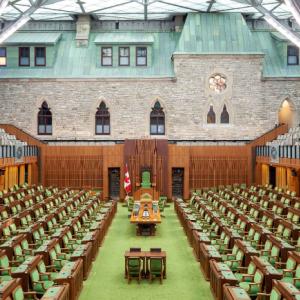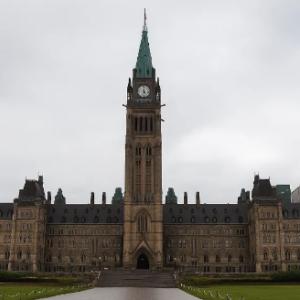Why are Ontario's family doctors burning out? I'll tell you
Family medicine is experiencing burnout on an unprecedented scale, while patients in small towns line up for hours if a new clinic opens, just in hopes of getting in. Two million Ontarians are currently without a family doctor and this is expected to double in the next 5-10 years. Fewer medical graduates are choosing family medicine and those who are trained in family medicine are leaving it behind for other fields of practice. We're in a full blown crisis. But why?
Family medicine is the backbone of primary healthcare delivery. A robust family medicine system saves money for taxpayers. “An ounce of prevention is worth a pound of cure.” Despite the growing challenges family doctors face today, we are confronted with a provincial government that refuses to adequately fund practices, while the federal government targets us with tax increases.
Family doctors are trapped as small business owners. They don’t have the luxury of being able to adjust prices for their services to accommodate inflation, higher insurance costs, software fees, and tax hikes. The only way to increase earnings to offset the massive rise in expenses is to churn through more patients faster, or to cut operational costs by hiring less staff and decreasing the quality of services. No matter what choices are made it always leads to worse care or more hours worked for less pay.
Simultaneously, while family doctors are under this immense pressure, the government of Ontario is opening healthcare service delivery to major private corporations such as Shoppers Drug Mart, Walmart and Telus to name a few — organizations that don’t take a Hippocratic oath to protect patients. Instead, they have a legal obligation to maximize shareholder value and return. The only way to meet their obligation is to extract as much money, data and attention from patients as they possibly can.
Recently a Reddit thread that went viral showed that Shoppers Drug Mart was forcing pharmacists to do medically unnecessary MedsChecks on many patients in order to generate revenue off of taxpayers. Others in the pharmaceutical space recently tried to announce mandatory dispensing of expensive drugs from specific pharmacy chains in an attempt to bully independent pharmacists out of business. To-date, governments have done nothing to correct this disgusting behaviour. This is a dangerous path and a source of growing frustration for family doctors who are struggling to keep their practices open.
Another solution government is offering is to allow Nurse Practitioners and Pharmacists to practice independently which further fragments primary care delivery. This is in stark contrast to evidence demonstrating that team-based care has the best outcomes and is likely the most cost effective long term solution. While these are skilled workers and highly valued, what is most frustrating for family physicians is the preferential treatment that other practitioners receive over family doctors.
Firstly, nurse practitioner clinics are being funded to the tune of millions of dollars per clinic and often the reimbursement per-patient is significantly higher than what a family doctor receives from OHIP. NPs are given the luxury of being able to see far fewer patients in a day than what a family doctor sees, meaning taxpayers are spending more for the same service. Meanwhile, family doctors have been calling for funding increases for decades.
There is also evidence that suggests NPs tend to refer more and order more unnecessary medical tests. This is much more costly to the system in the long run.
When it comes to pharmacists, the double standard is astounding. Pharmacists have the ability now to both diagnose (or accept a patient self-diagnosis), prescribe and dispense medicine. This is a very troubling erosion of the professional separation between these functions of primary care.
The College of Physicians and Surgeons of Ontario has guidelines that prevent doctors from diagnosing and dispensing concurrently because of the glaring financial conflict of interest. This has always been the case in medicine — separate the practitioner diagnosing from the one dispensing — to avoid unnecessary prescriptions for financial benefit (intentional or subconsciously). Allowing this type of practice is pretty much a slap in the face to family doctors. Why are other providers not held to a similar standard as physicians?
Family doctors, if permitted to dispense, would be able to keep their practices afloat with the massive revenues that pharmaceuticals bring in. Yet this is not permitted for doctors while pharmacists get a pass. And it doesn’t end there.
Pharmacists are also able to prescribe for conditions that medico-legally require physical exams, often times of sensitive areas (ie. genitalia). Again, why is it that an MD can lose their license for prescribing something without doing a physical exam,(which will lead eventually to a wrong diagnosis) yet other providers are permitted to prescribe without these exams? Even when physicians practice virtually, if a physical exam is required we are mandated to refer the patient for an in-person exam as the standard of care virtually must meet that of an in-person assessment.
The final straw here is that now family doctors wake up daily to an inbox of 10-20 messages from pharmacists about all the issues they have treated, along with all the MedsChecks they performed, adding 20-40 minutes a day of unpaid paperwork. It is all of these issues happening simultaneously that provides perceived convenience for the patient, revenue for Shoppers Drug Mart, and massive frustration and unpaid labour for family doctors.
Pharmacists are an extremely talented group of experts who have so much potential to help yet are being forced into diagnosing with inadequate tools and infrastructure. I would rather see their scope expanded to help patients pick the best drugs for their MD-diagnosed condition before they attempt diagnostics.
At the end of the day, family doctors are the ones shouldering all of these burdens. Family doctors are grossly underfunded while NP clinics are getting much more funding per patient. Family doctors are held to standards of care that pharmacists are somehow able to bypass. Family doctors are trapped between the underfunding of two levels of government while being excessively taxed. This is what moral injury looks like. This is why we’re burning out.
Ontarians deserve a robust family medicine network and access to team-based care from family doctors, specialists, nurse practitioners and pharmacists. Instead we’re seeing corporate greed, fragmented care and the lowering of standards of care. I won’t remain silent while this dismantling of healthcare unfolds, and neither should you. It's your health at risk.
For part one of this article series, click here.
